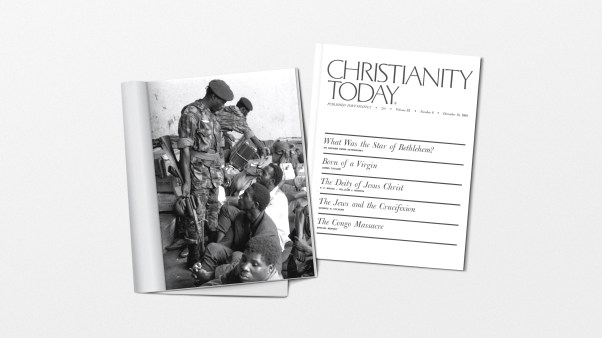Different ways to observe the Christian discipline of prayer.
The executive of a large corporation once called the Episcopal bishop of Chicago. The bishop’s secretary answered.
“The bishop is not able to come to the phone right now,” she said. “He’s praying.”
“Praying?” the executive exploded. “He should be working!”
His response isn’t surprising. Prayer and work are often viewed as mutually exclusive. But our fundamental work as pastors is prayer. Everything we do takes shape and direction from it.
Prayer is easily relegated to a small segment of a busy day. We’re like those busy disciples coming to Jesus with the request, “Lord, teach us to pray.” We want to pray but discover prayer means work.
The hardest part may be knowing where to begin. How do we set the pace and the priority for a life in the Spirit? I’ve been helped by the variety of Christian traditions and have found each to enhance the importance of prayer in my life.
From head to heart
In my Episcopal tradition, a blend of Catholic and Protestant devotional style, we speak of people “saying their prayers” from the Book of Common Prayer. I like the structure my tradition brings to prayer. It releases me to deeper communion with God. Structured prayer is like a road map. If I know my destination and the directions to get there, I can relax and enjoy the scenery. A prayer book or a devotional manual does not tell me what to pray, but rather provides prayer form and direction.
Reading the “Collect for Purity” in the Book of Common Prayer lifts me into God’s presence. I pray, “Almighty God, to you all hearts are open, all desires known, and from you no secrets are hid: Cleanse the thoughts of our hearts by the inspiration of your Holy Spirit, that we may perfectly love you, and magnify your holy Name, through Christ our Lord.”
After the prayer, I choose different aspects of the prayer on which to focus. I might, for example, focus on its theme of purity: “Lord, you know my heart. Purify it, cleanse it by your Holy Spirit. Purify my heart, Lord.” Or, I might emphasize the latter part of the prayer: “Lord, let me love you more perfectly today. Give me specific ways to love you and magnify your Name.”
I also find strength by returning repeatedly to certain prayers. As words and phrases are memorized, they take root in my heart and become a subconscious prayer language. I found a similar thing happened during my years of professional vocal training as I memorized many scores of music. In time, some of the words stuck in my head became more familiar. My teacher stressed that memory was a means to communicate, not to perform.
Repetitive prayer can communicate with God powerfully, in a conscious way. First it engages the intellect and then becomes integrated with the heart.
Once a spiritual master asked me, “What do you really want God to do for you?”
After a long pause, I replied, “I want him to teach me to celebrate.”
For a long time in my private devotions, I would pray repeatedly as I inhaled a breath, “Holy Father, Holy Son, Holy Spirit.” I was aware of drawing into myself the Holy Trinity. Then I’d exhale these words: “Teach me to celebrate.”
A year later, several friends commented on my countenance.
“John, there’s something different about you, they said. “You seem happier, lighter.” God had indeed responded to my heart’s cry.
Spontaneous and image-filled
Others may need a more spontaneous way to pray. Perhaps spontaneity frees them from the compulsion to organize life in order to control it.
Guided meditation on a verse of Scripture is one way to nurture spontaneous prayer. Another way relies on brief conversational prayers of individuals in a group. This is free prayer at its best-a prayer that does not seek organization but an openness to the Spirit’s movement in the moment. Spontaneous prayer is not necessarily charismatic in form but takes its cue from the Spirit. It originates from the heart and seeks to be integrated with the intellect.
Reading Jesus’ words in John’s Gospel, for instance, can become the impetus for a spontaneous prayer: “I am the light of the world,” then, might prompt me to pray that his attributes would become real to me: “Lord Jesus, you are my light in my world; enlighten my darkness.”
In addition to spontaneous prayer is prayer sparked by paintings and other images. The Orthodox tradition employs icons to train and focus the mind on God. Admittedly, icons have stirred anger and controversy in church history. Some charge that those who use icons are praying to images. They in turn defend themselves, saying that they pray to God through the icon. The image draws them to the Spirit and away from themselves. Paintings can have a timeless quality that absorbs the viewer’s consciousness. Icons can be compared to windows into heaven that lift the worshiper into the Almighty’s grandeur.
An icon does not necessarily have to be an ancient painting. Some people focus on a natural object-a flower, a tree, a body of water-looking beyond the creation into the presence of the Creator.
Emptying silence
Others seek to empty themselves in order to pray. For them, images distract from the simplicity of God’s presence. The Quakers, for example, adhere to this form of spirituality, sitting in silence together in a simple room, waiting on the stirrings of the Spirit of God.
The monk’s cell is another locale of an imageless, silent spirituality. The Trappist monk, for example, seeks a life of silence in order to be formed and shaped by the Word of God.
For me, a silent retreat meets this need. A retreat is not another seminar, a clergy conference, a busy or perhaps “useful” meeting. I head off for a period of silence over three or four days. I do not bring my sermon planning form, correspondence, music, or any other distraction. This is a period of waiting, watching, and listening.
The bishop of my area requires clergy to participate in a retreat before Lent. We gather to hear meditations by a retreat conductor, and then we go off on our own. Listening to the Lord is difficult. Recently one retreat conductor admonished the silence-breakers by asking, “What gave you the idea that you had anything in particular worth saying? How can we speak the Word of the Lord if we do not first listen for his Word?”
If a retreat is too daunting, a single, quiet day can be helpful. A leader might give meditations for reflection rather than information to be processed. Ample periods to be quiet and alone can be offered. At mealtime, the conductor might read from a spiritual work.
In past days of silence, I have read portions of Oswald Chambers, A. W. Tozer, and Eugene Peterson. The readings maintain silence between participants and continue the spiritual focus. A debriefing near the end of the quiet day allows us to share common reflections and to prepare to reenter our noisy world.
Recently, I conducted a quiet day for a group of clergy in a nearby town. We rented a Christian camp, where we knew the staff would respect our need for silence. As we began, I asked each pastor to put his watch in a basket. Not only would we be silent, but timeless as well.
We prayed together, and I gave three brief meditations on a general theme. Time for silence followed where we could walk, sleep, read, or do nothing and wait. At lunch I read from a Christian classic. We ended at mid-afternoon.
When permission was granted to talk once again, everyone remained silent, waiting. When the comments came, they were offered gently and slowly. These were vulnerable, heartfelt words. In our silence, God had formed a community. The pastors did not want to leave it.
That quiet day restored our relationships with God, ourselves, and our colleagues.
Daily walking with our God
How much time should we give to prayer?
Martin Luther said he would pray an hour a day, and then, if he discovered that he was becoming too busy and preoccupied during the day, he would pray another two hours.
I’m no Luther, but I spend an hour each day in prayer, praying both at home and at the church. I’ve always been an early riser, so around 5: 00 A.M. I pray at home, sometimes while walking or running. At church, I use my tradition’s prayer book for form and structure. I also engage in daily intercession for needs and for quiet contemplation of the Lord’s presence.
I’ve used elements of all these approaches to prayer-the disciplined and the spontaneous, the intellectual and the emotional, the image-filled and the empty style of prayer. And while I may favor a particular style, nothing need prevent you from favoring another. But whatever our style and path may be, we will grow in it through regular practice.
Without focused times of prayer, even the deepest well runs dry. That’s why I try to guard my walk with God and give time for God to walk with me.
-John R. Throop
St. Francis Episcopal Church
Chillicothe, Illinois
Copyright © 1993 by the author or Christianity Today/Leadership Journal. Click here for reprint information on Leadership Journal.









